Stan Lee has left us, at least in his corporeal form. I’m sure somewhere in the countless pages he penned there’s a Stanism about leaving earth but living on as a powerful spirit. Watching the outpouring of mourning from every level of fandom, entertainment and the world, and the hundreds of photos – making him surely one of the world’s most photographed humans – I realized that Stan is like Elvis, Marilyn, Prince. Not only is one name sufficient to identify him, but the spiritual and ritual nature of the memories place him in the ranks of what one religion might call “saints” – a supernatural being whose mere presence confers blessings and joy.
Which Stan would have loved, and his detractors hated.
So before I get going, the first memorial I’ve heard of as this Friday at the Golden Apple on Melrose in Hollywood. From their email newsletter:
So in light of Stan’s passing today, we are opening our shop to ALL fans and colleagues to our event on Friday from 6-9pm. Come and listen or share stories about Stan and join us in a toast him, his legacy and his timeless characters.
The first of many, I’m sure.
It does seem odd to be sad about the passing of a 95-year-old man who was clearly ready to move on, and had lived life to its fullest. But it can’t help but be sorrowful. Setting aside all the Stan the egomaniac talk, it’s indisputable that meeting him brought joy to many people. And Stan was great at it. He loved getting adulation and being Stan and firing off quips. He was a spirit that the rules of nature didn’t seem to apply to. His generally hale demeanor at an age where most are confined to scooters and gruel was truly superhuman.
I remember seeing Stan at the Harvey Awards in 2011, at age 88. He was frail and stooped, but moved with the ease and speed of a man 1/3rd his age. Stan’s eyesight and hearing were shot, but he carried on. I interviewed him around the same time, and although he would often steer the conversation to a familiar pattern, he was funny, alert and unmistakably Stan.
Former Marvel editor Nicole Boose wrote on her FB page that
“Every exchange, even on mundane subjects like typos, left me with the feeling that I’d just had a thrilling adventure.”
That was truly Stan’s gift, to make life more than the mundane in every moment. It’s what fueled his gift for writing superheroes, and enabled him to stay relevant so long, even to little kids.
In his later years, Stan joined Twitter, back when it was fun, and it was obviously him, writing nonsense about staying at home with his beloved Joanie. He followed my own twitter account – whether it was him or some handler I’ll never know – but of course Fangirl Heidi was thrilled. When the con men who took over his life scrubbed the whole Twitteraccount, I was swiftly unfollowed and replaced by Kim Kardassian or some other celeb.
On the subject of Stan and Kirby and Ditko…that battle will rage for a long time – but it’s not even really necessary to wonder wha the battle lines are. Ditko and Kirby wrote SCORES OF COMICS. You can easily see the differences from those and what they did with Stan and judge for yourself whether Stan had no claim. I don’t think there’s much question. Stan had the gift of writing melodrama that was exciting, not just cliched. Just how shitty he was to others will be left for other to talk about in the years to come.
Stan’s passing from the corporeal world has survived TWO news cycles, unheard of in today’s hellscape, and cementing his greatness and cultural weight. Here’s some of the Best Stan Takes – all written by men, one notes. Are there no FEMALE COMICS PUNDITS? I hope Laura Hudson gets to weigh in some time.
These are my own idiosyncratic links, some social media posts that show a Stan we didn’t see, a few filled with rage. You don’t live 95 years without doing a hell of a lot, and Stan did it all.
And to sum it all up: STAN LEE SURE LIKED THAT GREEN SWEATER.
Bendis has an obviously planned remembrance, but it’s a nice comic, and frank about Stan’s later years.
Sean T. Collins in Rolling Stone
Abe Reisman in Vulture
Glen Weldon on NPR
Stan Lee, in most cases, came up with the bold strokes. He would invite an artist into his office and proceed to act out the story, hurling his body through the action. He would leave them to design the costumes, and backgrounds and panel-by-panel breakdowns. When they were done, he would take a look at what they had drawn (which, if the artist was Kirby or Ditko, often differed greatly from the outline Lee had provided) and fill in the dialogue.
He urged them to go bigger, in every panel. Why have characters talk when they could shout? Frown when they could cry? Argue when they could brawl? No story, no page, no panel would be wasted on the inessential, the mundane. He told his artists to infuse the stories with big emotions, with metaphors the size of giants who could eat planets. Timely/Marvel’s competitors at DC Comics had their own superheroes, of course, but they were given to sitting around conference tables and cooperating with one another. As a result, their stories felt staid, tidy. Small.
Stan Lee made superhero comics big.
Douglas Wolk in Vanity Fair with a more wide-ranging assessment;
But of all the characters with whom Lee is associated, his greatest—and the only one he created entirely on his own—was “Stan Lee”: an egomaniac who thought it was funny to pretend he was an egomaniac, a carnival barker who actually does have something great behind the curtain. Artist John Romita, who worked with Lee on Daredevil and Spider-Man, put it nicely in a 1998 interview: “He’s a con man, but he did deliver.”
And Tom Spurgeon with an amazing summation:
Eight-year-old Marvel readers wanted to be Spider-Man. 16-year-old Marvel readers wanted to be the guy drawing Spider-Man. Lee found a way to wink at readers that never felt like he was making fun of any potential serious devotion to the narratives.
Of all the things I read , this twitter thread by Moisés Chiullán is perhaps the most touching. It paints the picture of how Stan survived all those cons at his advanced age. it was easy to see that this is what he lived for, but it was not, of course, as easy as he made it look.
I’m glad that I got to meet and work with Stan Lee over the last few years. I did my best to focus on making our time on various stages together as comfortable for him as possible, focusing on things I knew he liked talking about, especially (before her passing) his dear Joanie.
— Moisés Chiullán (@moiseschiu) November 12, 2018
Amy Weingartner, formerly an editor at Marvel, has an anecdote that captures both Stan’s editorial eye – everyone says that this was no act but a true gift – and his need to get his name everywhere.
Now for the other side, long time Kirby inker Mike Royer has some salty words:
An FB friend who I shall not name points out that both Ditko and Stan died essentially in similar ways. Not quite alone, but pretty alone. Stan had a somewhat problematic family and no one who really cared for him at the end; Ditko’s family was a lot closer than many have suggested.
Finally, in many many obituaries, it’s been noted that Stan turned to comics and changed his name because he was hoping to write The Great American Novel and didn’t want to sully his name with the comics connection. If Stan’s life was anything, it was a living timeline of the acceptance of comics as an art, a change that Stan’s ambassador role very much helped. And there is more to come. Stan has a novel coming out next year (co-written by Kat Rosenfield.) It’s called A Trick of Light and it will be Lee’s first novel.
Never say never – dreams do come true.
PS: I wrote the above for this week’s Beat newsletter, but I didn’t get to write about this:
When I started writing the beat back in 2002, Stan Lee was an endless source of news fodder. His lawsuits against Marvel; the bizarre story of Stan Lee Media and renegade financier Peter Paul; the many many pacts of Stan.
Stan’s triumph in co-creating the Marvel U and his triumph as a movie star and the greatest draw comic cons will ever know bookend a strange period of his long life. All of these deals, and attempts to get Marvel movies made…the shell companies and the streaming content. The terrible Marvel movies and TV shows of the Stan in Hollywood era. It must have frustrated him a lot in the early days, and the immense success of the MCU – and Stan’s lovable cameos in it – must have been the ultimate vindication.
And in case I didn’t make it clear enough: I will miss Stan.


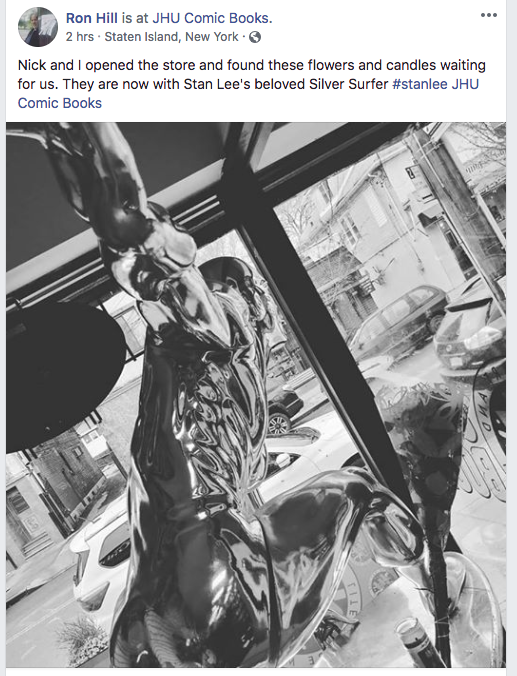
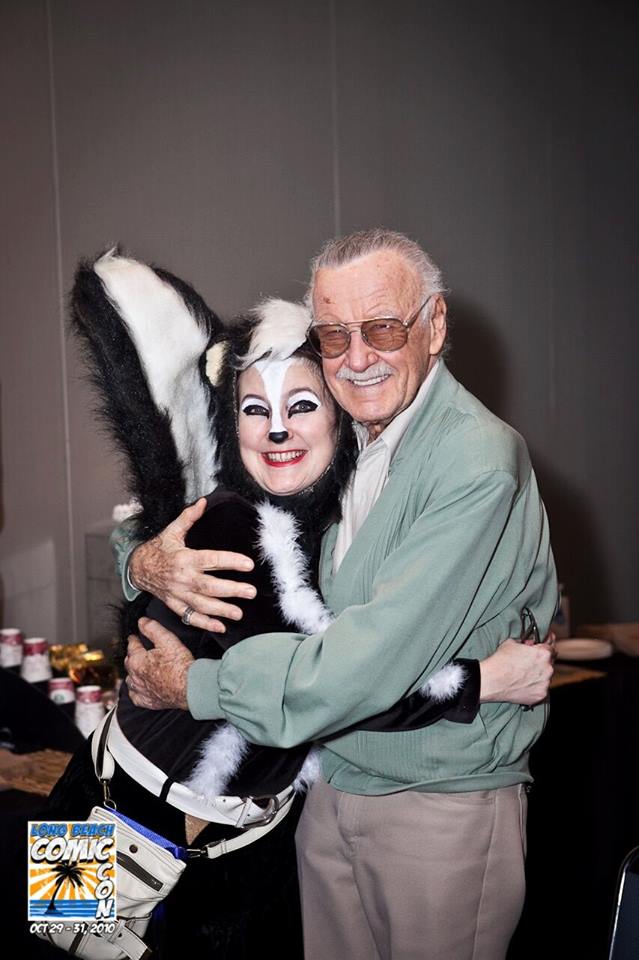
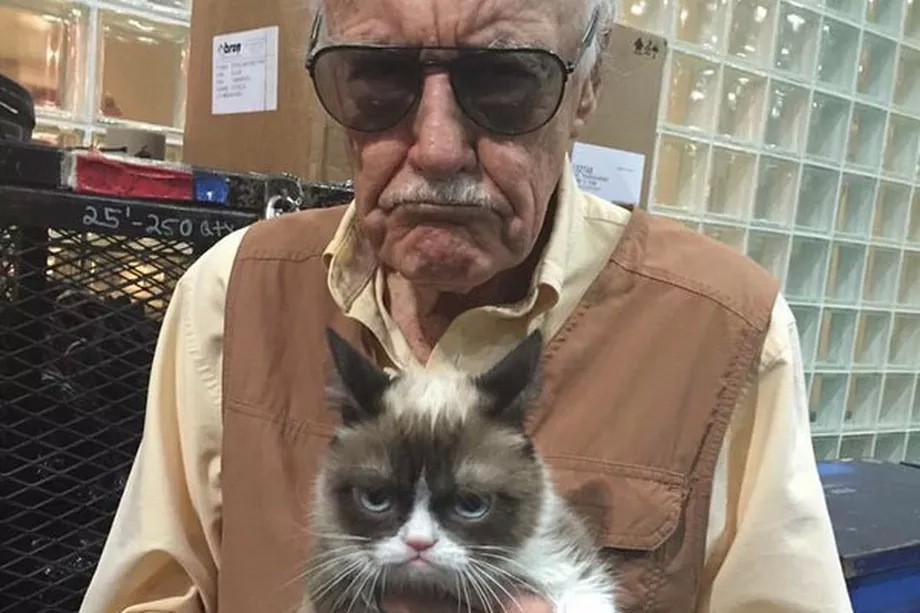
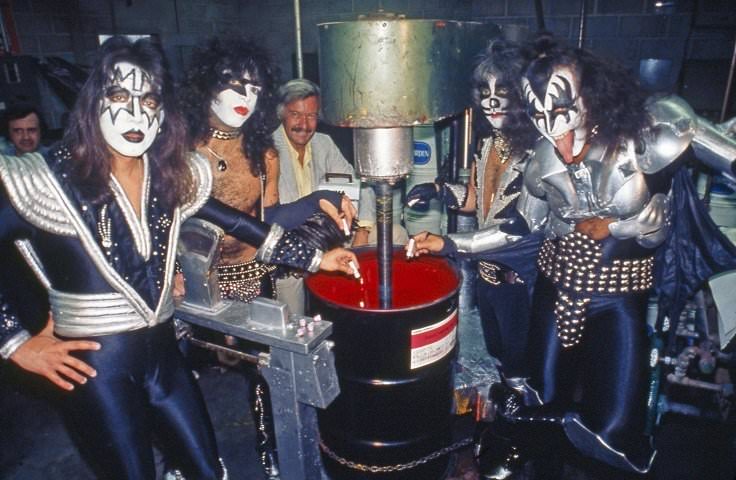
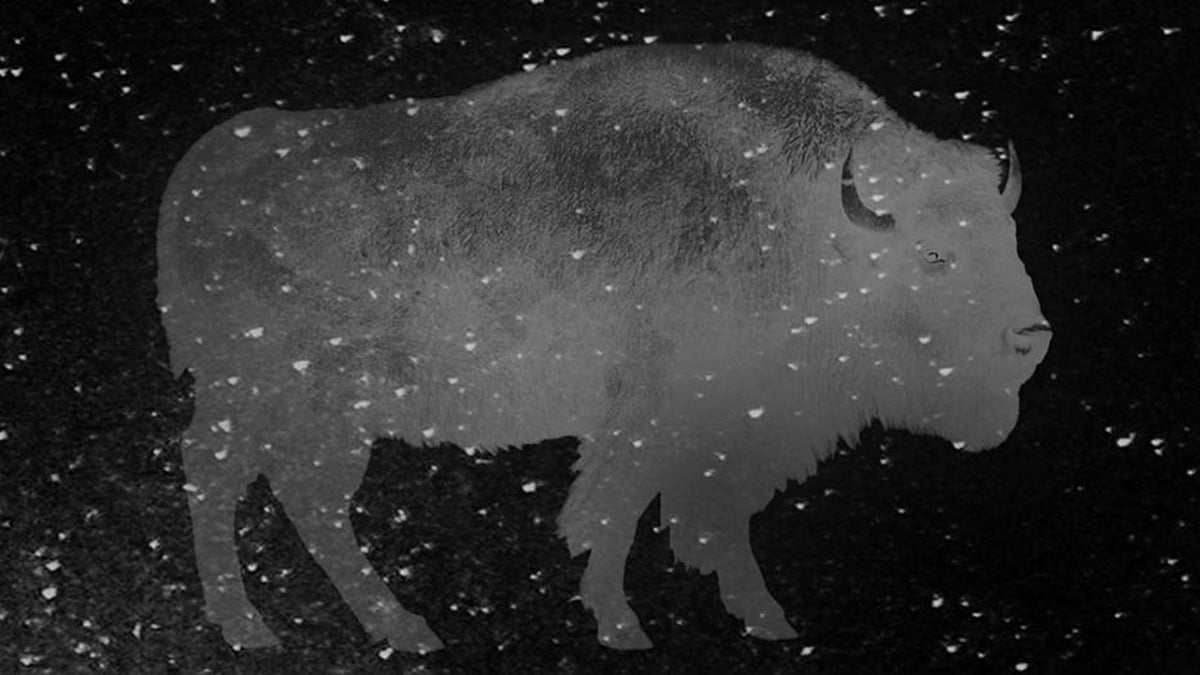






“Stan had a somewhat problematic family and no one who really cared for him at the end.” Stan’s daughter JC was with him and cared for him, and Stan made a point of telling that to visitors and interviewers in his final months.
FYI, Laura Hudson has written a rather good obit:
https://www.theverge.com/2018/11/12/18088554/stan-lee-death-obituary-marvel-comics
I can understand Mike Royer’s frustration. He knew Jack Kirby well especially when Jack worked for DC in the early 1970s. When the dust settles I think it will be clear than Stan was an idea man who gave ideas to people who could carry them out brilliantly. Stan’s dialogue at Marvel in the 1960s was clearly a different style than what DC was doing. But Jack Kirby and Steve Ditko could take a premise and enlarge on it. They were creative intellects in their own right as well. Jack created the Silver Surfer as an offshoot of the Galactus premise. Steve Ditko created Doctor Strange on his own and Stan acknowledged that in the 1960s. But together they were all greater than the sum of their parts. After he left Marvel, Jack continued creating (the New Gods is no minor achievement) but Jack had trouble with dialogue, something which came naturally to Stan. Ditko’s own writing went off on political tangents which were strange and off putting. Ditko understood Spider-Man and did more with the character than anyone did after he left (and much which happened after was a retread of Ditko’s character style and storytelling). But when he had the chance in the 1960s, Stan did not go to bat for the artists. When Martin Goodman went back on his promise to pay royalties to his artists when their work resulted in merchandising and TV series, Stan said nothing. Ditko quit because he felt that Goodman had lied to him and he wouldn’t work for a liar and he even urged Jack to quit when he did in 1966. Mike Royer heard all these stories from Jack first hand more than 40 years ago and he never forgot however much Jack himself came to terms with everything that happened.
Kudos to Jackie Estrada for the mention of Stan’s daughter. I would add that since he stayed married to the same woman until she passed in 2017, that too probably should constitute a “non-problematic” family relationship.
Though I appreciate Mr. Van Hise’s attempt to meliorate Mr. Royer’s extreme [position, I really don’t think Lee owed Kirby or Ditko any special treatment. It was a brutally unfair system, benefiting the publishers at the expense of the creators; of that there is no doubt. But it was also a business, and Lee’s relationship to Kirby and Ditko was, first and foremost, a business relationship. If Goodman tendered any verbal contracts to Kirby and Ditko, they really should’ve known that said contracts wouldn’t be worth the paper they were printed on. Why should Lee intercede? Why should he chance being fired by the temperamental Martin Goodman– who, by all accounts, never appreciated what his creators had wrought– if the artists could not sort out their business affairs themselves?
Does anyone, at this late date, seriously believe that Lee’s intervention would have forced the penurious Goodman to make good on verbal promises? If so, are you a native of this planet, or are you an immigrant from Earth-616?
I agree with something Paul Levitz said: Stan obviously created an atmosphere where Kirby and Ditko’s talents could flower. None of their solo work or work with other collaborators was as good. (Sorry, New Gods fans and Mr. A fans.)
Give Stan credit for being the editor who decided which of Kirby and Ditko’s ideas would get into print. A lot of their ideas were ridiculous, as became obvious when they left Marvel and wrote their own comics. And they couldn’t write coherent dialogue at all.
IMO, Kirby’s early work at DC — New Gods, Mister Miracle, Forever People and Jimmy Olsen — was in fact better than his previous 2-3 years of output at Marvel. Dialogue notwithstanding. Earlier work, before Jack decided he wasn’t giving away ideas to Marvel any more, was magnificent and Stan was a major reason. But to call Stan the idea man in that relationship rings false to me.
I would agree that Kirby’s absolute best work, his creative apex both visually and conceptually, was represented by the Fourth World saga at DC (particularly issues inked by Royer). Yes, Stan made the dialogue in those Marvel comics of the 60s more snappy, hip, and fun. But dialogue alone is one of SEVERAL foundational cornerstones of storytelling (along with structure, pacing, theme, originality, etc). Stan Lee deserves credit as an editor and a co-writer. But, If anything, Kirby was clearly the one who did the lion’s share of the actual writing (see cornerstones above), along with all of the (pencil) drawing. And since working with Kirby, Stan did not ever create or co-create anything within the same universe of visionary genius as The New Gods. Kirby was still a titan, without Lee. As for Stan Lee, without Kirby or Ditko or Romita or whoever? Well, he still wrote snappy dialogue. Which is awesome. But Kirby did WAY, WAY more… before and after he crossed paths with Stan.
Regarding Bill’s comment above that a lot of Kirby’s ideas were “too ridiculous”… Um, welcome to the wide world of comics. We love ridiculous. It’s kinda what we do.
Comments are closed.